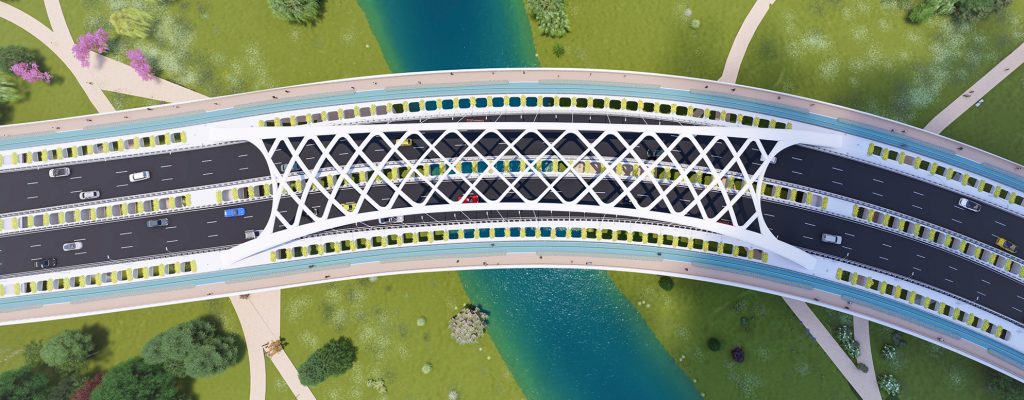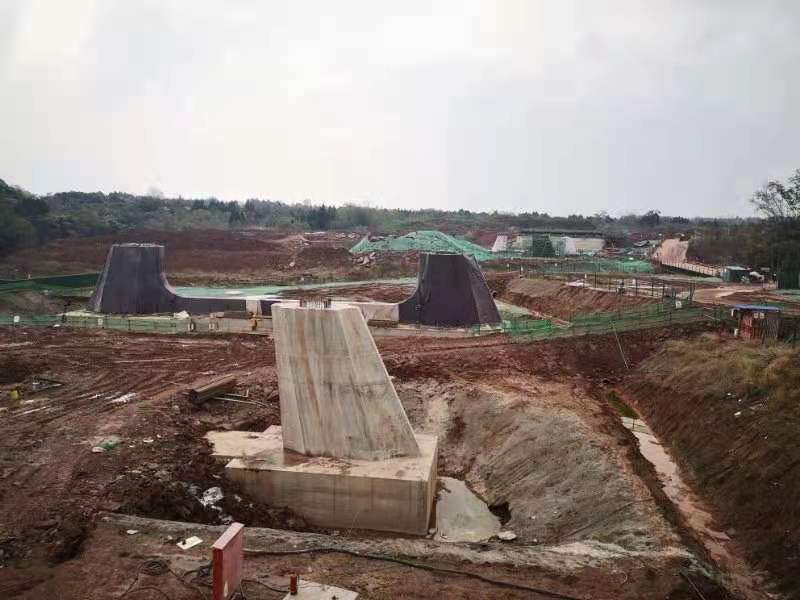
After the completion of the detail engineering, developed by SMEDI, work has begun on the East Bridge that is being executed by SRBG (Sichuan Road and Bridge Group). The conclusion is expected at the end of 2021.
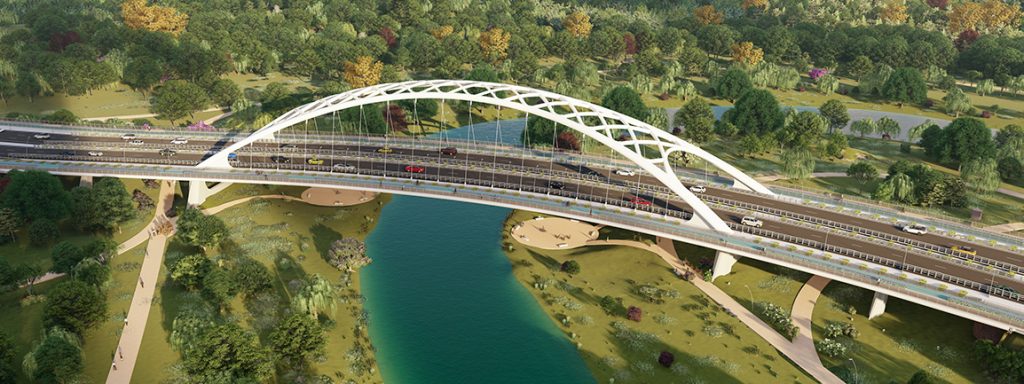
The CFC-SMEDI group has participated with AECOM, SBP, Zaha Hadid Architects, ARUP and Super Geometry Architects in the restricted international competition convened by the authorities of Chengdu City, China, called Sollicitations of Proposals for the Conceptual Design Scheme of Six Bridges in Jiangxi River, Chengdu Hi-Tech Zone.
The action is part of an ambitious expansion plan for Chengdu City, in the so-called airport city, planned to accommodate more than 10 million people. The axes that have guided the design of this new urban space are the integration with the natural environment and the sustainability of the action.
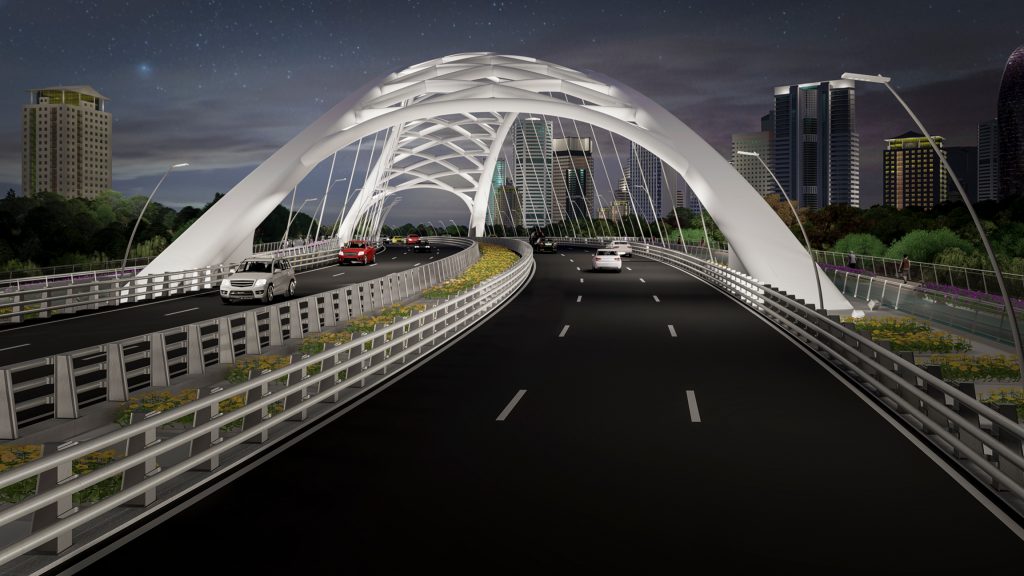
The CFC-SMEDI proposal won the East Line Cross-Jiangxi River Bridge in June 2019. The detail design has been developed by a local design institute with the collaboration of CFC-SMEDI, from that date until the beginning of 2020.
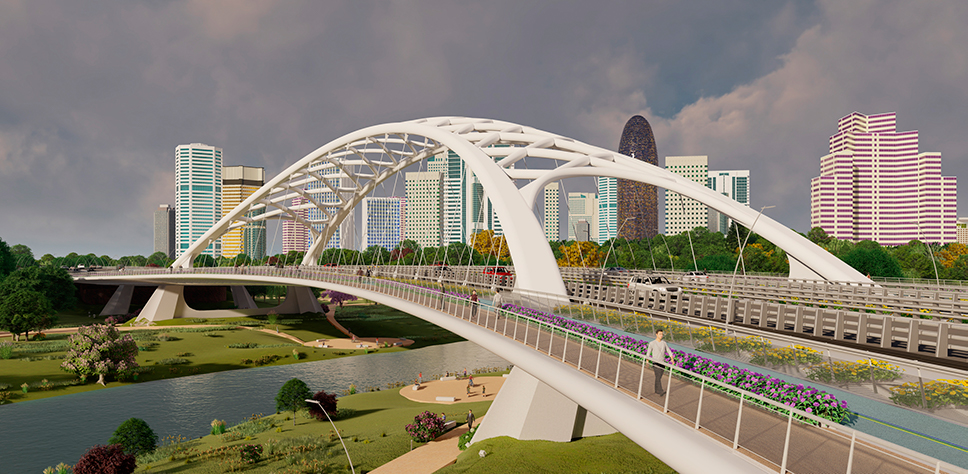
The work is a bridge for road traffic, pedestrian and cyclist of a total length of 280 m. whose distinctive element is a self-signed arch that saves the river of 152 m. span and arrow of 21.7 m. The formal and resistant particularity of the work comes from the cross of the curved path of the bridge combining the curvature in the plant with an inclination to the interior thus configuring from the structure, a work with a marked spatial dimension that provides a great visual dynamism.
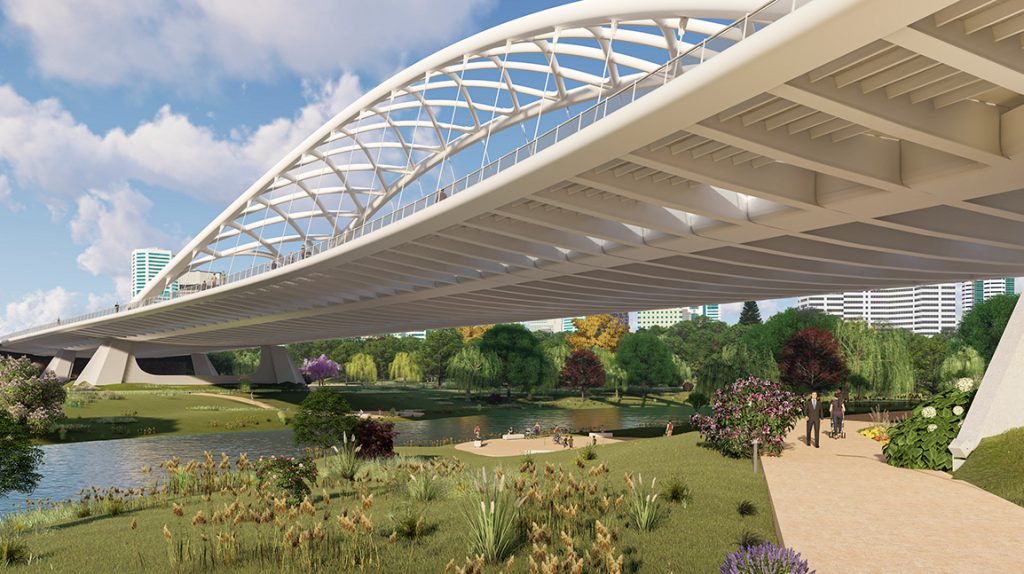
The cross-sectional stresses caused by the winged geometry generated by this arrangement are collected by a higher bracing formed by a lattice of tubes, essential element also in the formal configuration of the work, by having it in a domed shape between the arches to accentuate the spatiality of the structure. The board is solved with an orthotropic board formed by two intermediate longitudinal drawers hanging from sloping pendolas and curved transverse beams every 4.50 m.
